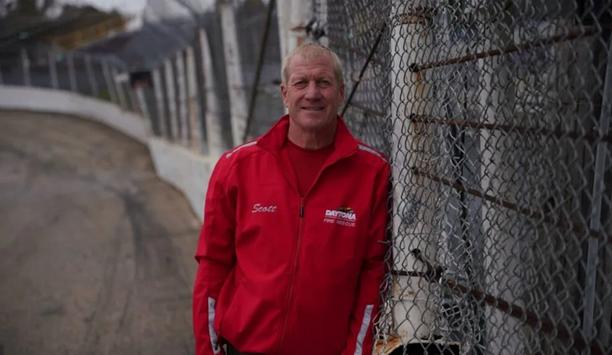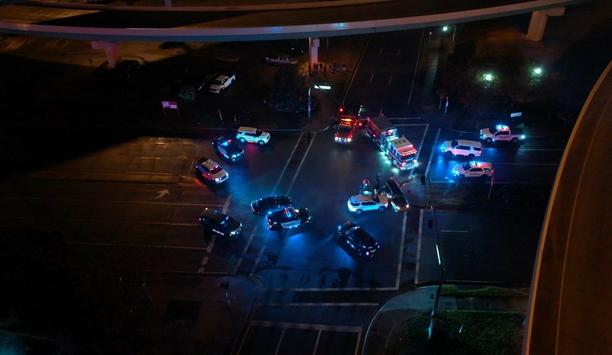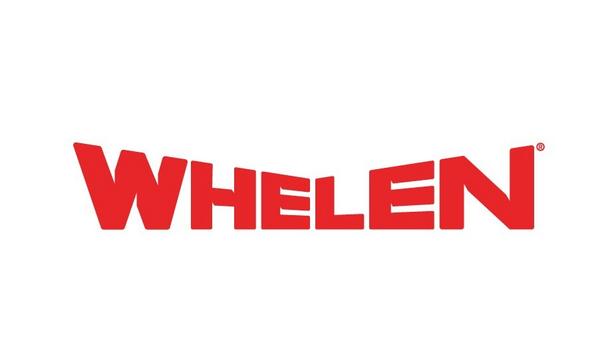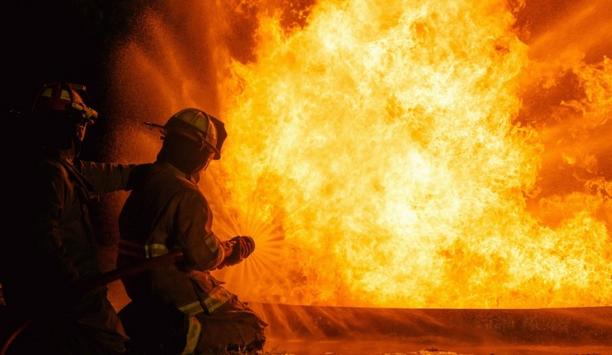Whelen Engineering Company - Experts & Thought Leaders
Latest Whelen Engineering Company news & announcements
It would be difficult to find someone with more energy, enthusiasm, and warmth than Scott Finco. A born-and-raised Wisconsinite, Scott is the kind of guy who makes everyone feel like an old friend within minutes of meeting him. Equal parts charismatic storyteller and level-headed problem solver, he is as quick with a laugh as he is with a life-saving solution. And for more than three decades, he has poured that boundless energy into protecting others, earning him the title of 2024 Whelen Everyday Champion. “I feel really good being singled out for this,” says Scott Finco, his endearing humility shining through. He adds, “But in my mind, this award is for my whole team. We’re all in it together, and I couldn’t do it without them.” A Life of Service and Passion Scott’s career spans 33 years in firefighting, including time as a lieutenant Scott’s journey to becoming a respected racetrack safety professional began with two childhood passions: firefighting and racing. Growing up, Scott spent weekends at local racetracks with his family, watching cars zoom by and dreaming of being a part of the action. That dream turned into a lifelong calling, combining his love of motorsports with a drive to serve. Scott’s career spans 33 years in firefighting, including time as a lieutenant with the Menomonee Falls Fire Department. But his passion for safety and service didn’t stop there. Scott has extinguished countless car fires Over the last two decades, he has become a fixture in the racing community, working on safety teams at iconic tracks like Daytona International Speedway, Talladega, and Road America. He’s extinguished countless car fires, performed extractions, and even saved lives, including performing CPR for 15 minutes on a competitor who suffered cardiac arrest at a racetrack. “I think one of the most rewarding parts of this job is helping a driver or fan on their worst day,” says Scott Finco, adding “We often get letters or personal thank-you’s from drivers. Knowing that you used your training and made a difference - it’s really moving. Sometimes, it brings tears to my eyes.” Teaching, Mentoring, and Leading by Example As the Safety Team Director and an instructor, Scott is passionate about mentoring new team members If there’s one thing Scott loves as much as being on the track, it’s teaching others how to do the job right. As the Safety Team Director and an instructor, Scott is passionate about mentoring new team members and sharing the lessons he’s learned over the years. “I always ask, ‘Did you learn something, and is there progress?’” explains Scott Finco, adding “You have to keep learning, keep progressing, and keep looking out for each other. That’s how you build a strong team.” Expert in racetrack safety Scott describes racetrack safety as a job with a lot of moving parts, comparing it to an octopus with many tentacles. From protecting drivers and fans to ensuring the safety of his teammates, Scott’s responsibilities are as diverse as they are critical. He emphasizes vigilance and preparation as the keys to success. In his downtime, Scott continues to sharpen his skills by studying crash videos on YouTube, observing how safety teams approach various situations and analyzing what could be done better, or learning from jobs well done. “I’m always looking for ways to improve because good enough isn’t good enough,” says Scott, adding “You have to push yourself to be better every day.” Steady leadership and infectious optimism Scott’s team members often look to him not just for technical expertise but for his steady leadership Scott’s team members and students often look to him not just for technical expertise but for his steady leadership and infectious optimism. Whether he’s cracking a joke to ease the tension or demonstrating how to safely exit a truck during a crash response, Scott embodies the spirit of collaboration and community. Among several nominations submitted for Scott to be chosen as the Whelen Everyday Champion, one reads, “He is well-respected and well-trained. He is always working to make things safer and more efficient for everyone involved.” Scott is quick to credit the mentors who helped shape his career. “I wouldn’t be where I am without my Fire Chief and Captain at Daytona, Michael Cordle and Jim Gore, and the Emergency Services Coordinator at Talladega, Randy Ballard,” says Scott, adding “Those three men trusted me and showed me that hard work really does pay off.” Family and Legacy While Scott is deeply committed to his work, he’s equally devoted to his family, which includes three daughters and twelve grandchildren. Married for 39 years, Scott credits his wife, Margie, as his greatest supporter and the reason he’s been able to dedicate so much of his life to serving others. “My wife is just as important as any first responder,” Scott says. “She’s my rock. I couldn’t do this without her.” Safety team - a second family Scott also considers his safety team a second family, calling it a brotherhood Scott also considers his safety team a second family, calling it a brotherhood or a community that mimics what he experienced during his time as a firefighter. “We have each other’s backs,” explains Scott, adding “We have to protect each other, so it’s really important to trust each other and communicate when we’re out on the track.” Looking ahead, Scott hopes to continue mentoring the next generation of safety professionals and inspiring others to get involved. He also wants to raise awareness about the importance of racetrack safety teams. “I really hope this story inspires people to jump in and help out,” says Scott, adding “There’s always more to learn, and there’s always progress to make.” A Call to Serve Scott’s dedication to safety and service is a testament to his belief in making a difference wherever he can. For those inspired by his story, Scott offers straightforward advice on how to get involved, saying, “Google is your best friend. Look up opportunities in your area – whether it’s joining a fire department, volunteering at a local racetrack, or helping out at a community organization like a dog shelter – there’s always a way to give back.” Here are some practical ways to get started: Reach Out Locally: Check with fire departments, community centers, or local businesses to see where help is needed. Follow Interests: For those who are passionate about animals, look into local shelters or rescues. If drawn to emergency services, explore volunteer opportunities at fire departments or safety organizations. Stay Committed to Learning: Scott emphasizes the importance of growth, both personally and professionally. He suggests taking classes or seeking mentorship in areas where you want to contribute. Celebrating an Everyday Champion “Scott Finco is the embodiment of what it means to be an Everyday Champion,” says Peter Tiezzi, General Manager of Motorsports at Whelen Engineering, adding “His dedication, leadership, and humility inspire everyone around him, and we’re proud to honor him for his incredible contributions to racetrack safety.” Scott will be celebrated at the NASCAR Hall of Fame in Charlotte, North Carolina in February, joining a distinguished list of past honorees in the Whelen Hall of Champions. His story is a reminder that everyday heroes are all around us – dedicated individuals who turn their passion into a force for good.
As the demands on emergency responders continue to grow, so does the urgency to improve their safety and efficiency. The implementation of cloud-based technology is not just a modern convenience; it is a critical advancement that can save lives. This technology is transforming how emergency response teams operate, offering real-time solutions to age-old challenges. The need for such innovation has never been more pressing. The Urgency of the Situation Distracted driving has become a significant threat to first responders. According to a recent study by Autoinsurance.com, since 2020, nearly 500 first responders have been killed on the nation’s roadways by distracted drivers. Despite all 50 states having “move over” laws, compliance is inconsistent, with many drivers unaware or indifferent to the presence of emergency vehicles. The National Fire Protection Association reported that in 2017, over 15,000 fire department vehicles were involved in collisions nationwide, leading to 18 fatalities. Shockingly, these incidents also resulted in 1,080 injuries, highlighting the critical need for improved safety measures. vehicle fatalities NHTSA found that in 2019, approximately 2,500 vehicles crashed into firetrucks parked as blockers The statistics reveal a troubling trend: According to the United States Fire Administration, up to 25% of annual line-of-duty firefighter fatalities are attributable to motor vehicles. This figure underscores the daily dangers that responders face, not just from the emergencies they are called to handle but from the very act of getting to the scene. Moreover, the National Highway Traffic Safety Administration (NHTSA) found that in 2019, approximately 2,500 vehicles crashed into firetrucks parked as blockers, translating to nearly seven such incidents per day. perilous environment These figures are not just numbers; they represent the lives of first responders—men and women dedicated to protecting their communities. The rising number of distracted drivers, combined with the inherent risks of emergency response, creates a perilous environment for these professionals. The implementation of advanced technologies is, therefore, not just beneficial but essential in addressing these critical safety concerns. The Role of Cloud-Based Technology Cloud-based platforms are revolutionizing emergency response by providing essential tools that enhance situational awareness and safety. One such innovation is Traffic Preemption technology, which grants emergency vehicles priority at intersections and empowers them to request a greenlight as they approach. This speeds up response times and significantly reduces the risk of accidents. Whelen Cloud Platform® (WCP®) Chris Watkins specializes in working nationwide with fire, EMS, and law enforcement agencies Chris Watkins, Field Solutions Engineer Manager at Whelen Engineering, specializes in working nationwide with fire, EMS, and law enforcement agencies to implement the Whelen Cloud Platform® (WCP®), which provides Traffic Preemption capabilities. “Traffic Preemption can be a game-changer for emergency responders,” says Watkins. “It provides a safer passage through intersections, reducing the stress and uncertainty that responders face when approaching these high-risk areas.” communication and data sharing WCP utilizes a network of solution providers including Miovision, Applied Information, LYT, ThruGreen, and Econolite to offer traffic preemption and other enhanced safety features. The integration of cloud-based systems also allows for seamless communication and data sharing between various emergency response units. For example, systems like the WCP enable different agencies in active response mode — fire, EMS, and law enforcement — to share real-time information through Responder-To-Responder alerts that can flashlights on a control panel or trigger a digital voice message as they approach a scene. situational awareness Advanced warnings such as these increase situational awareness as emergency units converge on the same location at high speeds and have been shown to reduce the risk of collision by up to 90%. This is crucial in multi-agency responses, where coordinated efforts can significantly impact the outcome of an emergency. Geofence Controlled Technology The system can automatically enhance lighting and siren patterns, alerting nearby drivers more effectively Another invaluable feature of cloud-based technology that is provided by Whelen and other industry pioneers is Geofence Controlled Technology, which adjusts vehicle settings based on location. For example, as a vehicle approaches an intersection or enters a high-risk zone, the system can automatically enhance lighting and siren patterns, alerting nearby drivers more effectively and allowing apparatus operators to keep their hands on the wheel. reaching safely and quickly “Geofence Controlled Technology is an exciting innovation that significantly enhances the safety of both first responders and the community,” says Watkins. “It allows our first responders to focus less on navigating complex controls and more on reaching the scene quickly and safely, especially during responding events.” vehicle maintenance This system can also streamline vehicle maintenance, allowing fleet managers to monitor engine diagnostics and schedule repairs proactively. The ability to remotely update vehicle software and settings through the cloud reduces downtime and ensures that all units operate with the latest safety protocols. Beyond Technology: The Impact on Community Safety Cloud-based systems ensure that first responders can arrive more quickly and safely at the scene The implementation of these technologies extends beyond the safety of the responders themselves; it also impacts the broader community. By improving response times and reducing the likelihood of accidents en route to emergencies, cloud-based systems ensure that first responders can arrive more quickly and safely at the scene. This efficiency can be lifesaving, especially in critical situations like fires or medical emergencies. Digital Alerts Digital Alerts sent to the public can inform drivers of approaching emergency vehicles or active incidents ahead, giving them ample time to yield or reroute safely. This not only protects emergency responders but also enhances the safety of all road users. For instance, the WCP’s digital alerting feature using HAAS Alert’s Safety Cloud® service can send notifications to drivers’ GPS and vehicle infotainment systems, informing them of an emergency vehicle’s presence. This proactive communication can prevent dangerous situations where a distracted driver might not notice flashing lights or hear sirens in time. emergency response Furthermore, these technologies have implications for community relations and public trust. When the public sees tangible improvements in emergency response efficiency and safety, it fosters greater confidence in their local emergency services. This, in turn, can lead to increased cooperation during emergencies and better adherence to safety protocols like moving over for stopped emergency vehicles. data-driven approach Cloud-based systems also provide invaluable data for post-incident analysis Cloud-based systems also provide invaluable data for post-incident analysis. By recording and analyzing data from each response, agencies can identify patterns and areas for improvement. This data-driven approach allows for continuous refinement of emergency response strategies, ensuring that they evolve in line with emerging challenges and technological advancements. Conclusion The integration of cloud-based technology into emergency response protocols represents a significant leap forward in protecting first responders and the communities they serve. As distracted driving continues to pose a growing threat, adopting these advanced systems becomes not just a technological upgrade but a necessary evolution in public safety. safety and efficiency Chris Watkins aptly summarizes the essence of this innovation, “Utilizing the latest technology in conjunction with a high-quality lighting and warning system is the best way to increase safety and efficiency." "Cloud platforms like the WCP, which are specifically designed to protect those who protect others, offer tailored features that meet the unique needs of our first responders and provide solutions to the daily challenges they face in service of their communities.” Cloud usage The future of emergency response is here, and it’s in the cloud enhancing safety and efficiency and ultimately saving lives. As industry pioneers prioritize the continual development and implementation of these technologies, they honor the dedication of first responders who risk their lives daily, ensuring they have the best possible tools to do their jobs safely and effectively.
Whelen Engineering is proud to announce a new partnership with Econolite, part of Umovity and provider of Centracs® Priority software, that will expand the traffic preemption capabilities of its innovative software, the Whelen Cloud Platform® (WCP®). Whelen Cloud Platform features The Whelen Cloud Platform® (WCP®) is a cloud-based vehicle communication platform that sends and receives data through cellular networks. Prominent features of the WCP include the ability to manage vehicle configurations and firmware updates remotely, create faster response times with real-time information to pinpoint vehicle locations, and easily organize fleets with Whelen product information. Whelen’s partnership with Econolite will provide enhanced traffic preemption features that empower police, fire, EMS, and other fleets to request a green light upon approach, helping clear intersections and making emergency response and roadways safer. safety, support, and efficiency “At Whelen, we are always in search of new and innovative ways to provide more comprehensive protection for those who protect and serve others,” says Whelen CEO, Geoff Marsh. He adds, “This new partnership with Econolite will strengthen the capabilities of our Whelen Cloud Platform, allowing us to offer enhanced safety, support, and efficiency to America’s heroes as they travel to active scenes.” custom software Econolite’s Centracs integrates the latest in sensor technologies and crowdsourced datasets The flexible architecture of Econolite’s Centracs provides cities and transportation agencies with the ability to customize the software to their specific traffic control needs, integrating the latest in sensor technologies and crowdsourced datasets. "Centracs’ Priority solution is the ideal platform, providing a foundation to aggregate and leverage traditional and non-traditional detection system traffic data," said David Spinney, Econolite’s Vice President of Systems Software. emergency and priority vehicle location data David Spinney adds, "The widespread availability of mobile connections, including cellular-based emergency vehicle devices has made traffic data on-demand a significant source of real-time vehicle location information." He continues, "This type of ‘Infrastructure-less’ data has already been leveraged for traffic incident reporting, predictive modeling, and travel time estimation. We are excited to expand the use of emergency and priority vehicle location data available from Whelen’s cellular-based equipment with Centracs Priority."
The New Future For Fire Agencies
DownloadThe Eight Key Trends in Fire Detection in 2023
DownloadA Digital Platform to Improve Fire Safety Compliance and Inspections
DownloadOvercoming the Challenges of Fire Safety in the Paper Industry
DownloadCarbon Monoxide: Creeping Killer Caught In The Act
Download



















